habitat garden updates
Growing conditions and other info re: Dogwood, Viola Glabella, Red Flowering Currant, Bleeding Hearts, Oregon Grape, and Osoberry.
Identifying Cornus Nuttallii
There’s this sweet dogwood that existed on my property well before I came here. It is planted in an area of mature exotics - Fuschias, Hellebores, Aucuba, etc. For years I had assumed it was non-native because of its proximity to the exotic plants.
But I kept seeing dogwoods in the wild that looked awfully similar to this one. This year, I finally did the research to figure out if it is native or non.
Non-native exotic dogwoods do not have over 4 petals in their flowers. And the petals have notches in the top, unlike the native. Diagnosis for this plant: native. Cool!
Except… the natives are terribly susceptible to anthracnose. Later in the season I usually notice some pretty ugly symptoms on the lower, non-flowering branches. Once the tree is done blooming, it fades into the background and I don’t notice it any more. Except for those lower branches when they turn ugly. I might just prune them off this year, as they aren’t flowering anyway.
This tree is awfully tall, probably 25’. I had to use a bow rake to pull these flowers down for a photo!
Propagating Viola Glabella
Some years ago I planted Viola Glabella. The plants have grown into sizable clumps. Happy!
These are an important host plant to four species of butterflies in the Willamette Valley, and I’d like to have a lot of them. Rumor is that they spread via seed quite well, but so far I haven’t seen that to be true. A few seedlings here and there, but not what I’d like. They are potentially being devoured by slugs. I have yet to see the butterflies that use this plant as a host in the area.
This year I pulled one of the large clumps and divided it into five separate plants. That was 3 weeks ago and they all seem to be doing well, except that a slug (I think?) has attacked them a bit. Weird how the slugs attack smaller divisions and not larger ones. My plan is to take one of the larger plants each year and divide it.
Plant review: Xera’s Lime Punch Red Flowering Currant
Last year I planted a tiny little start of Xera’s Lime Punch Red Flowering Currant. Boy did it jump up and grow!
This is exciting, as I haven’t had the easiest of time with the straight species of Red Flowering Currants. They seem to grow rather slowly for me, if at all.
The fact that the soil in this location is different in that it has a ton of imported soil and humus from previously being a vegetable garden might be part of the difference. But my goal is to have large droves of this plant, and the soil conditions would be difficult to replicate on a large scale. I do, however, have access to plenty of mulching materials and woodchips, so perhaps after they break down I will have the groves I desire with the other plants I’ve got.
Happy Bleeding Hearts - in full sun/drought adapted
Last year I did a major renovation on a corner of the property that had a pretty nasty infestation of Himalayan Blackberry and invasive sweet Cherry. Up popped a large swath of bleeding hearts.
It seems to be very happy to live in full sun and completely drought adapted. I have seen these conditions on a nearby timber parcel as well.
This plant is the sole host of the Clodius Parnassian butterfly in our area. Some years I see quite a few of these flitting around.
Even though this large patch of bleeding hearts exists, I have plenty of room for expansion for even more Parnassian habitat!
Happy Oregon Grape
Another plant that has rebounded after bad blackberry infestation is tall Oregon Grape.
It was only about 2’ tall. But two years after removing the blackberry it is at least 4’ wide in all directions, six feet tall, and has probably 30 bloom heads on it. Neato!
Groves of Osoberry
Here’s another surprise after removing significant quantities of blackberry…
Very large swathes of Indian Plum! They were glorious in February, as the first blooming native plant. This time last year, I didn’t even know this many Osoberries existed on the property - the blackberries were that thick. And I was surprised to see them growing in rather wet and quite sunny conditions along my creek. They do exist here and there in the dryish forest, but nothing like they do along the creek.
I had initially thought this was a shade only/dry forest plant. But if you’ve got areas near creek they do quite well.
Donations: the information that is provided here is free for gardeners of all financial means. If you’d like to financially support this site, you can make a one-time donation or monthly subscriptions on this link. All proceeds will fund more garden projects to share here with you, dear readers, thank you! And thank you SO much to the folks that have supported me. Your contributions mean so much.




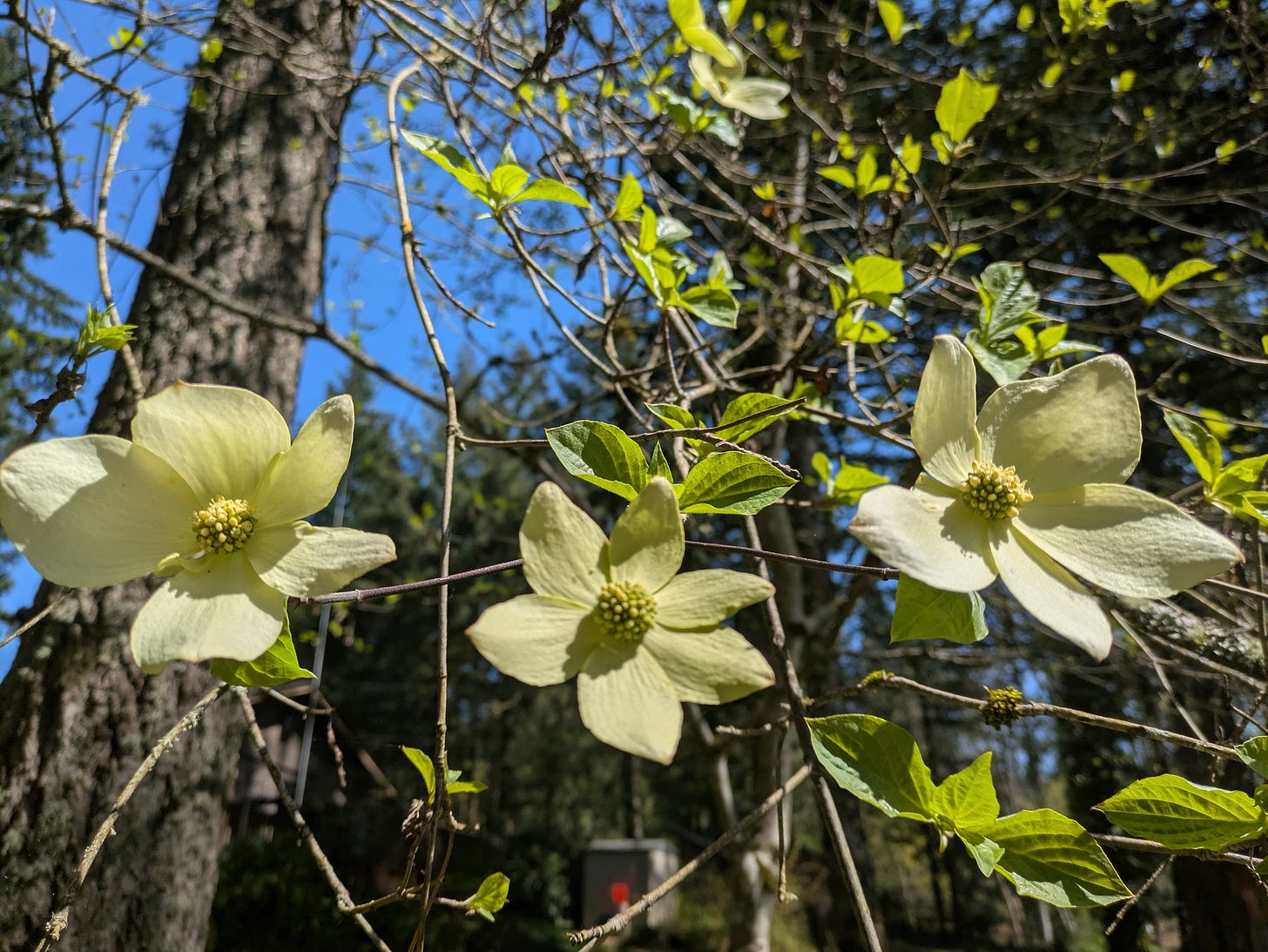
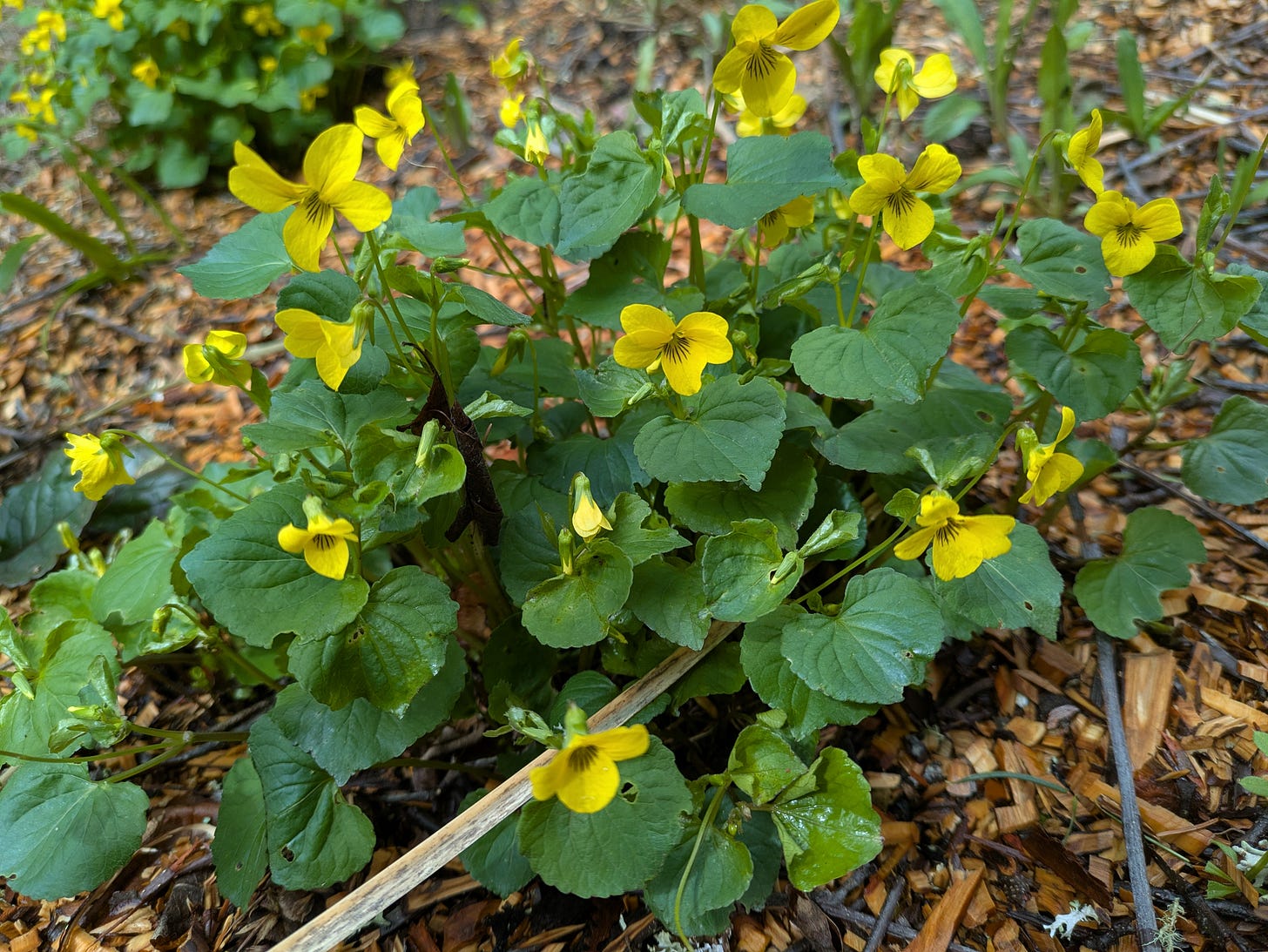

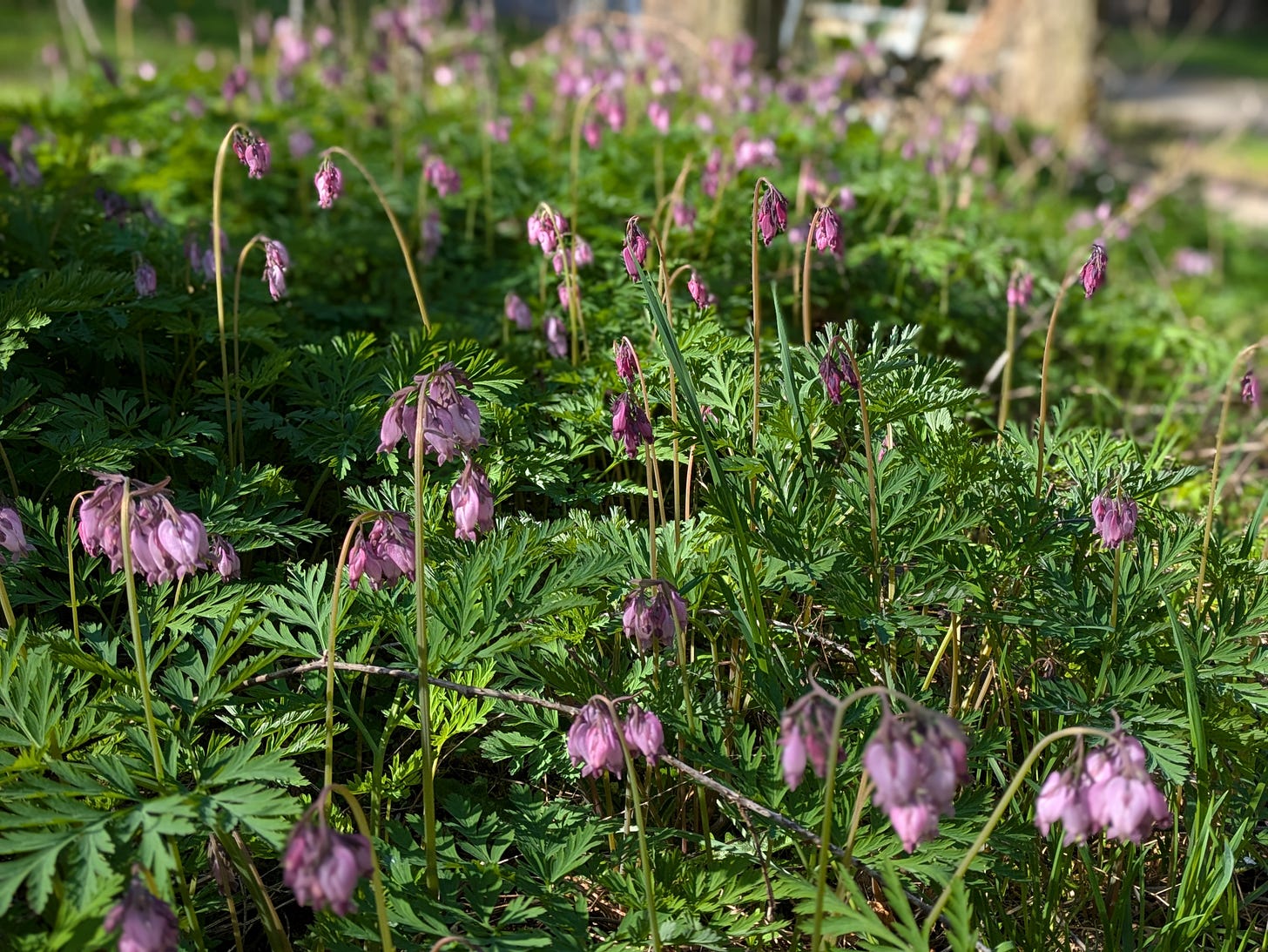
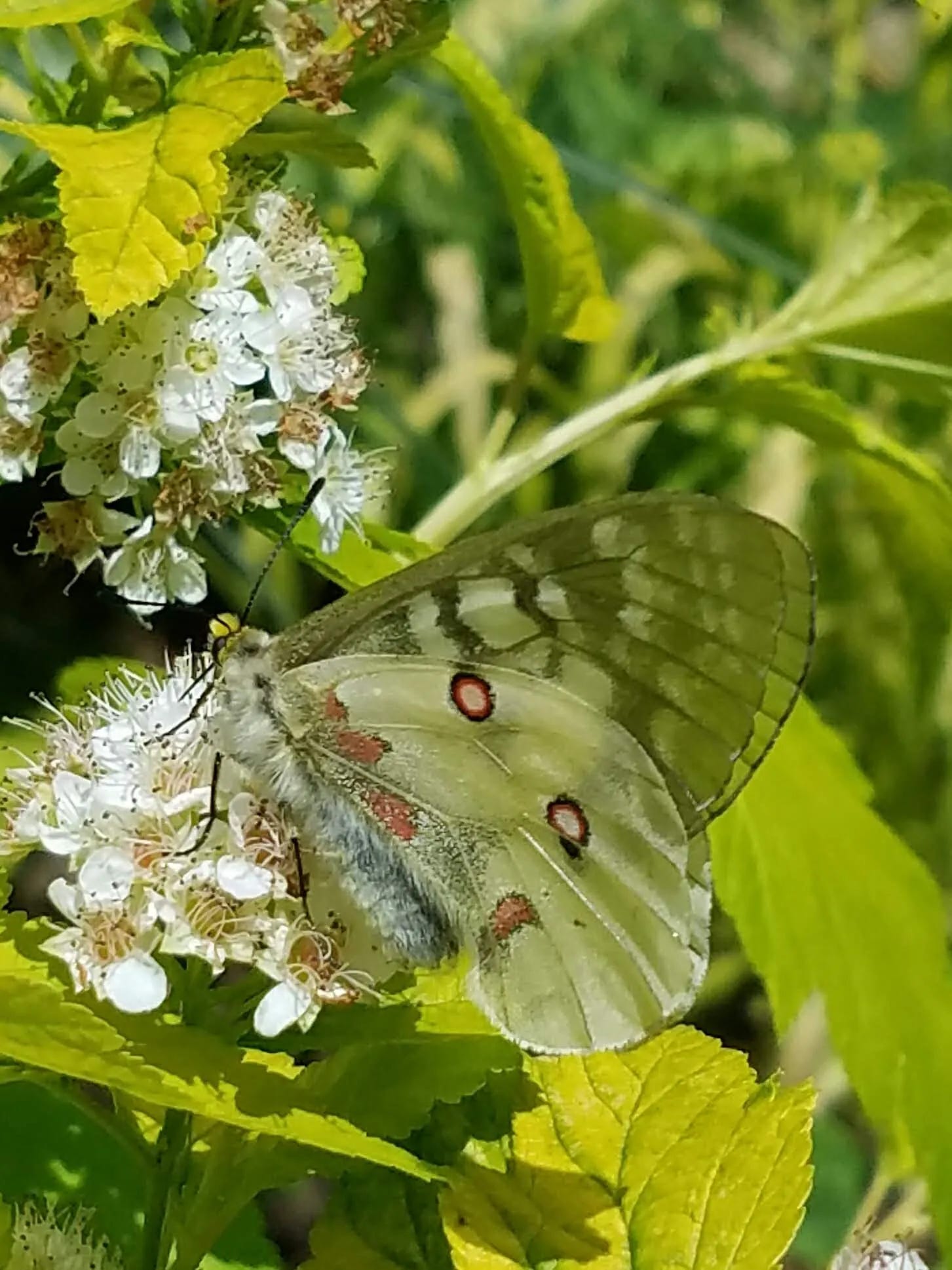
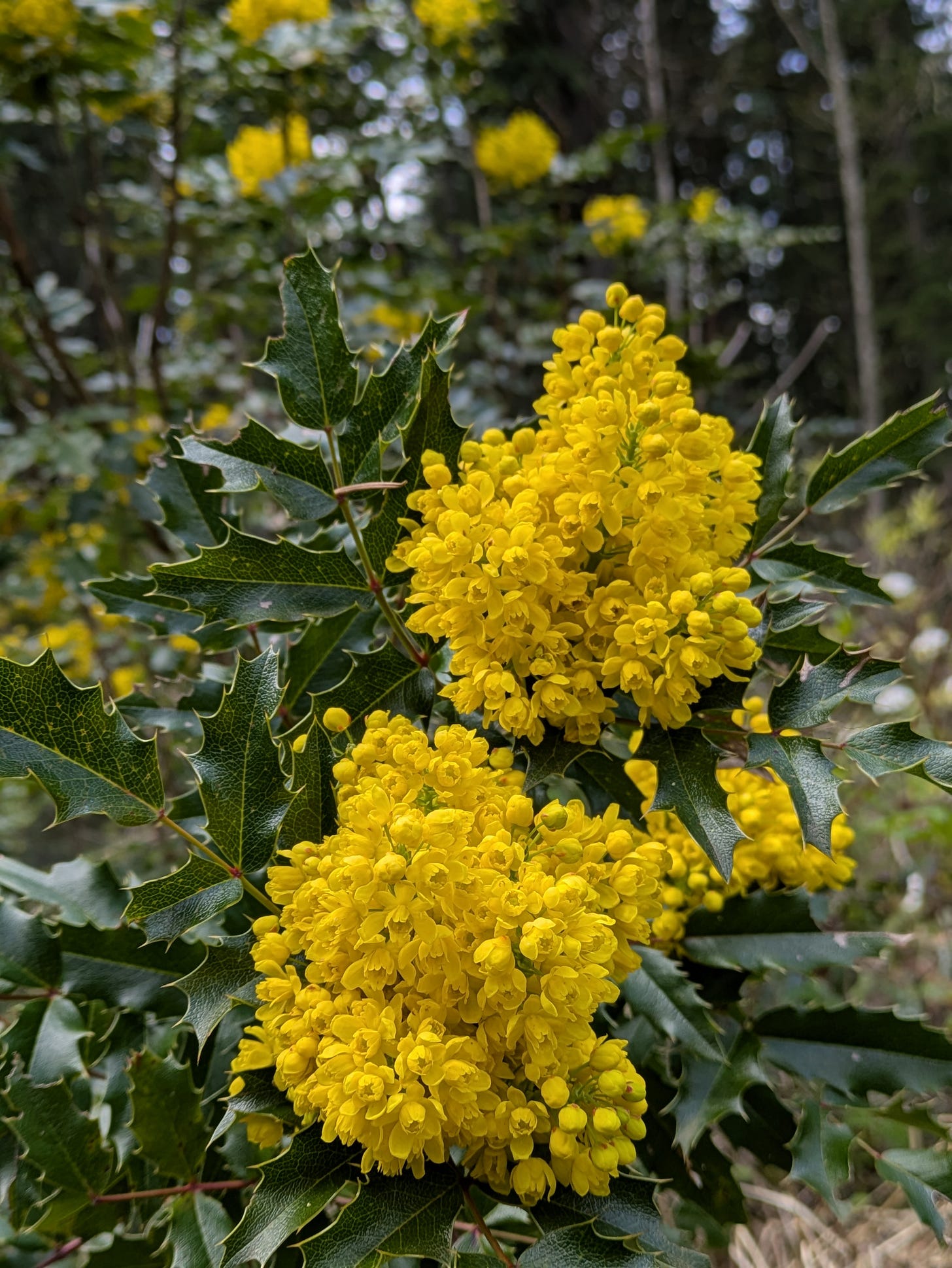
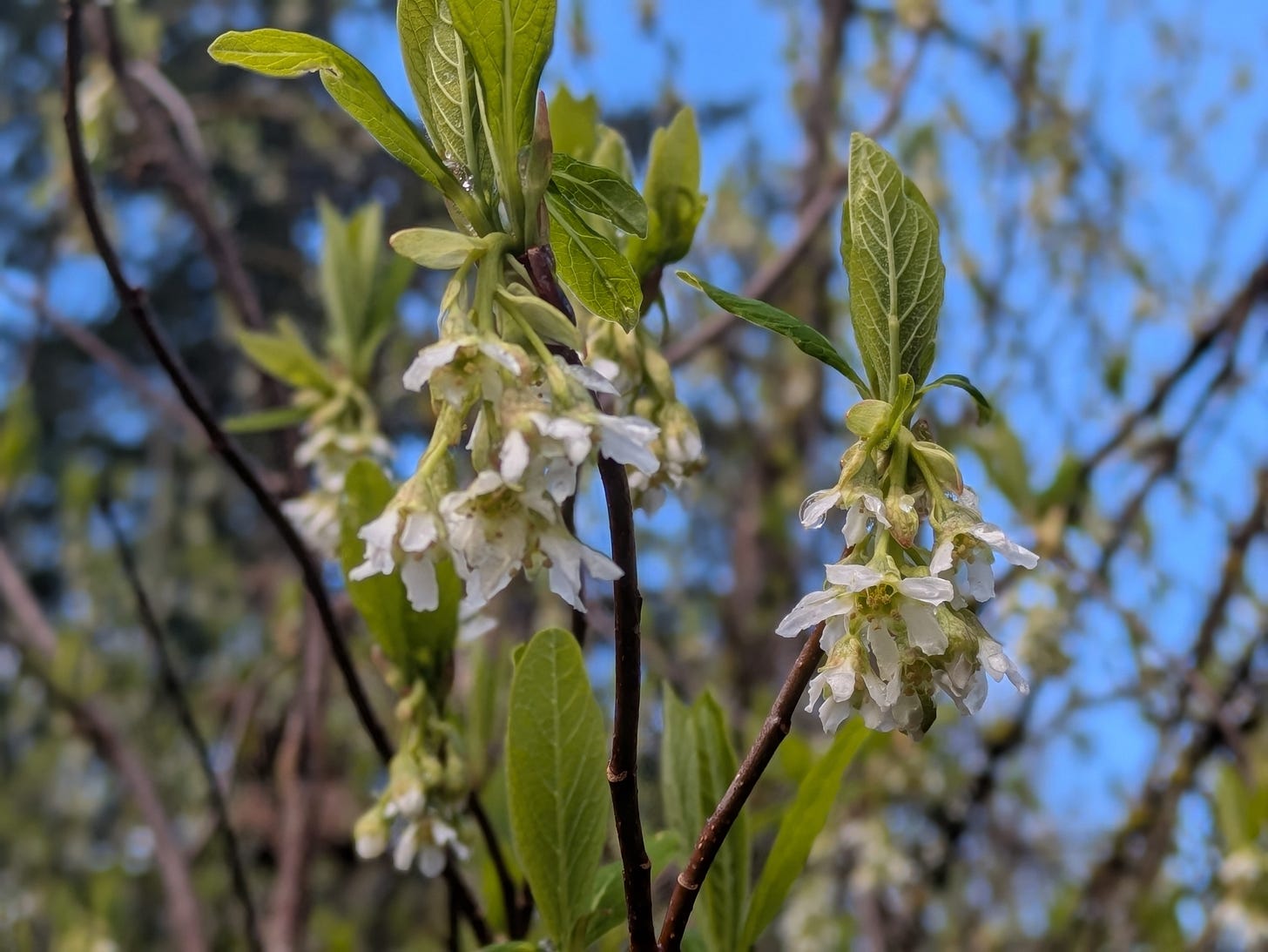
Excellent news! I think this is a banner year for Osoberry; I have it popping up all over the place. Alas, the areas where I cleared blackberry seem to only harbor stinging nettle and snowberry. Yeah, I know nettle is another important host plant, but I'd love a swath of bleeding hearts!